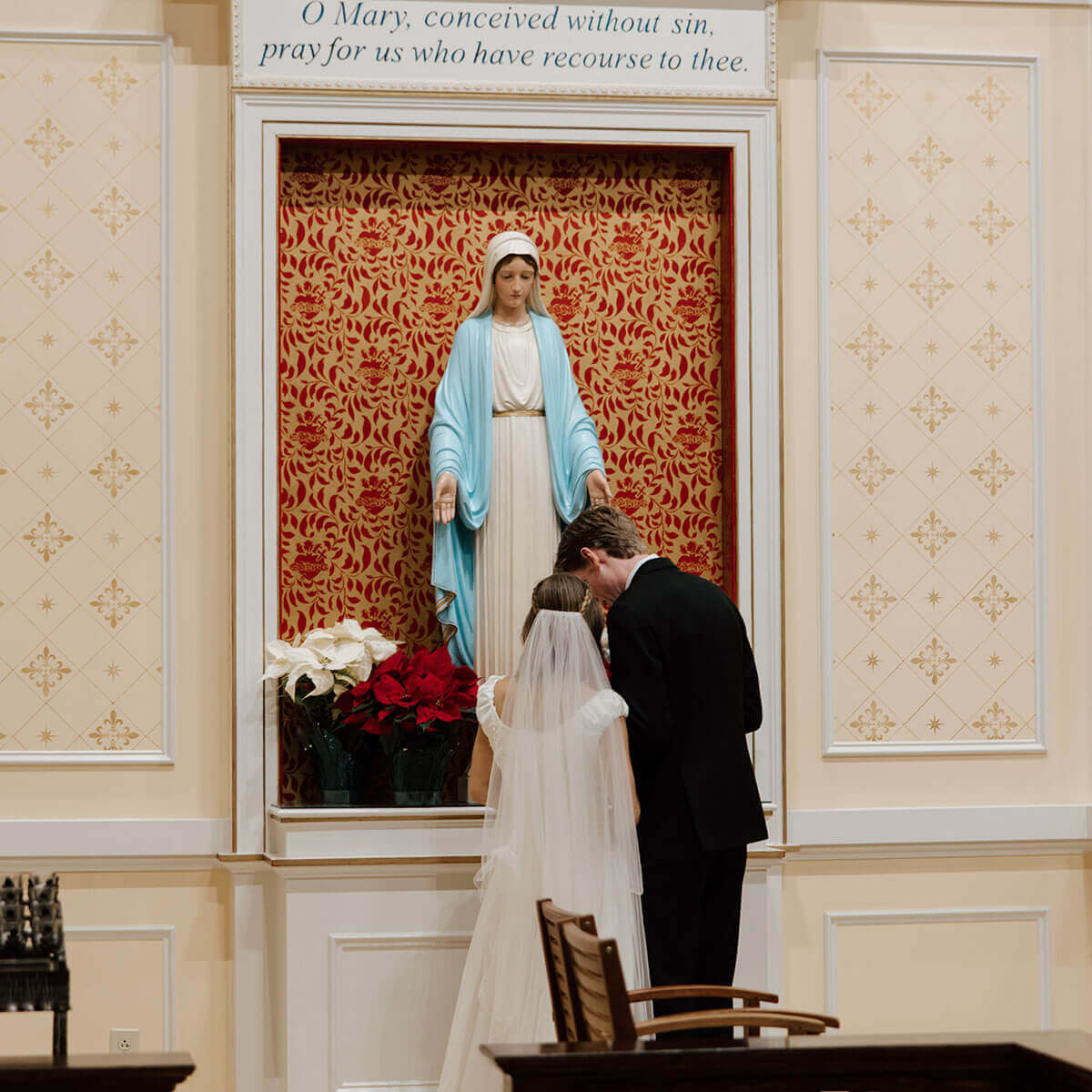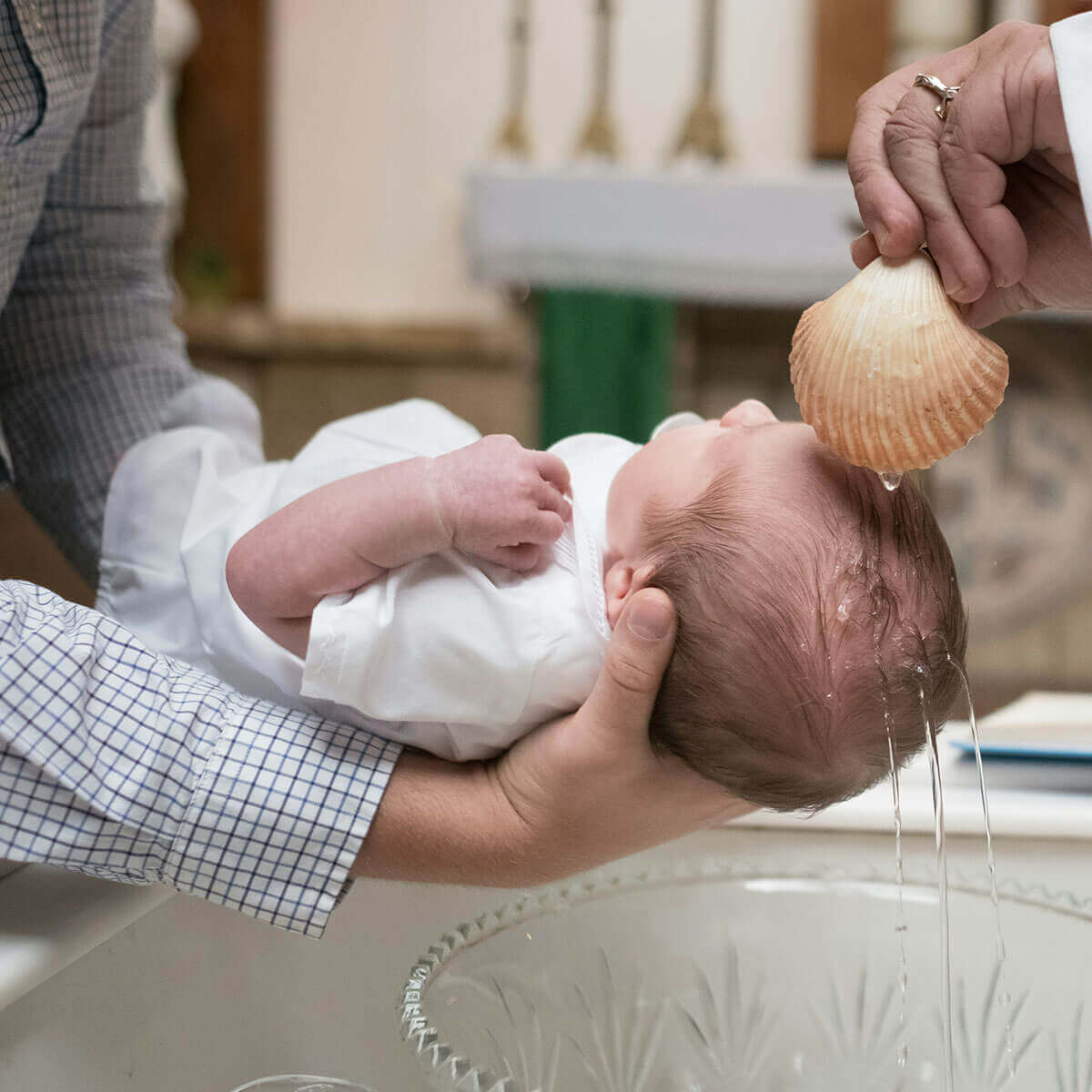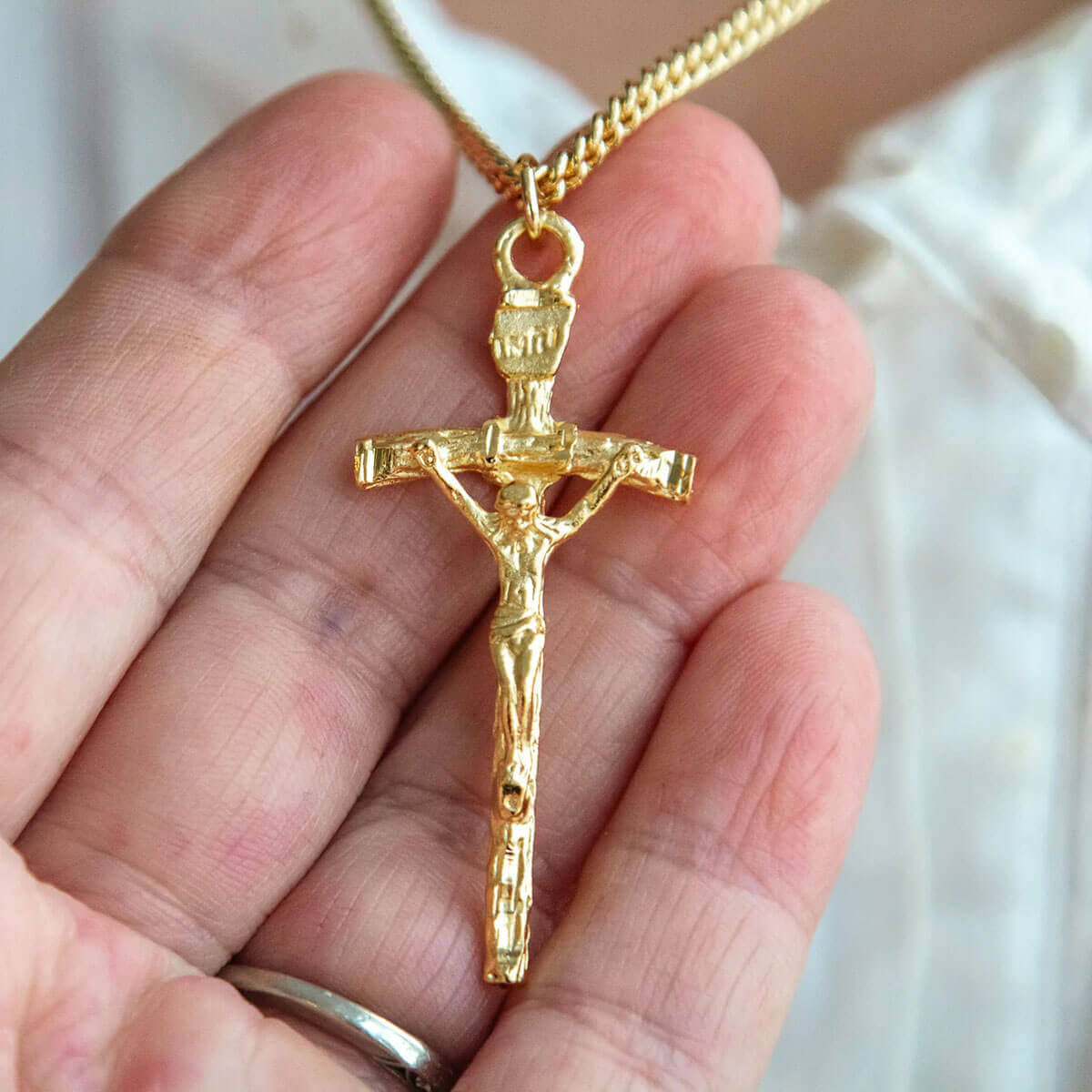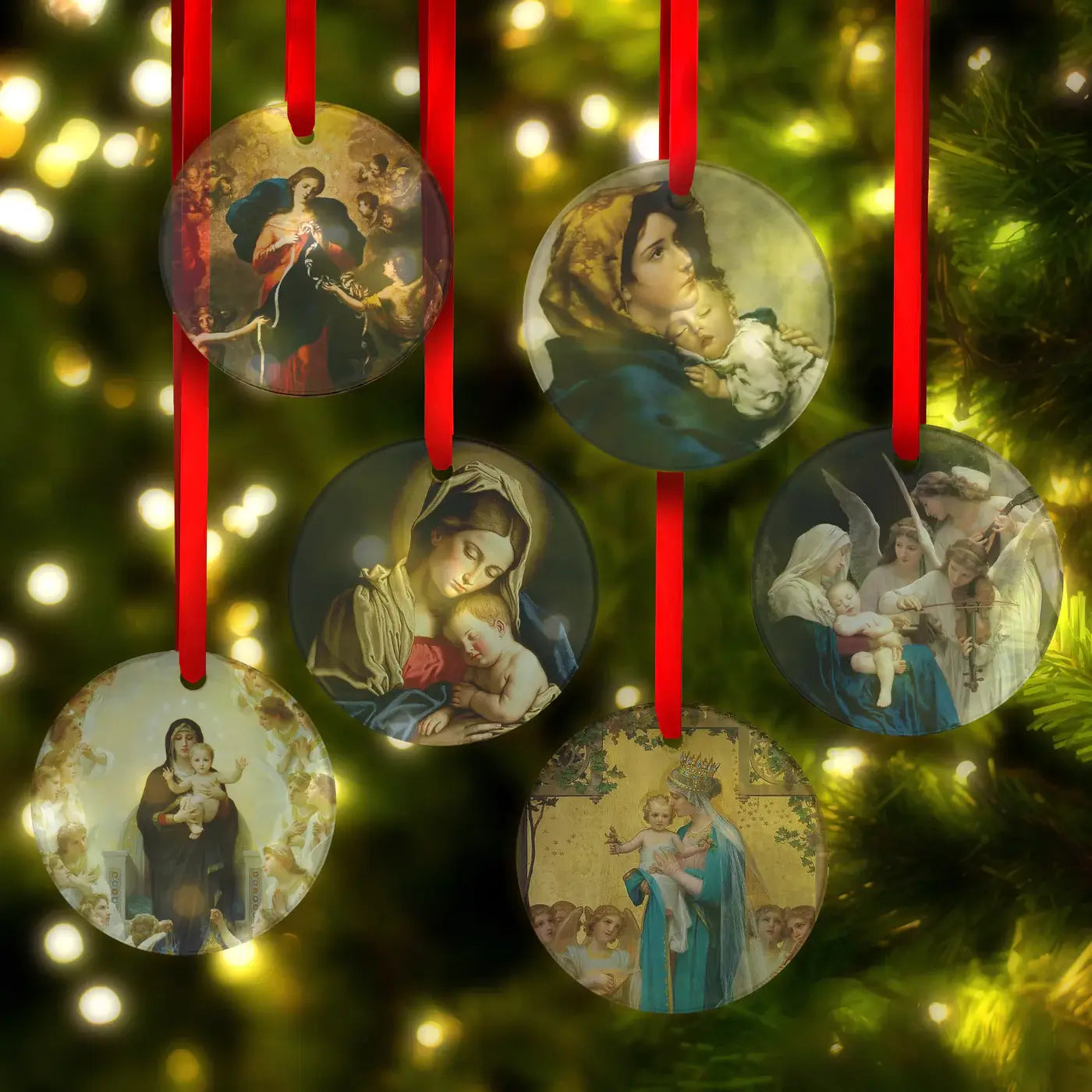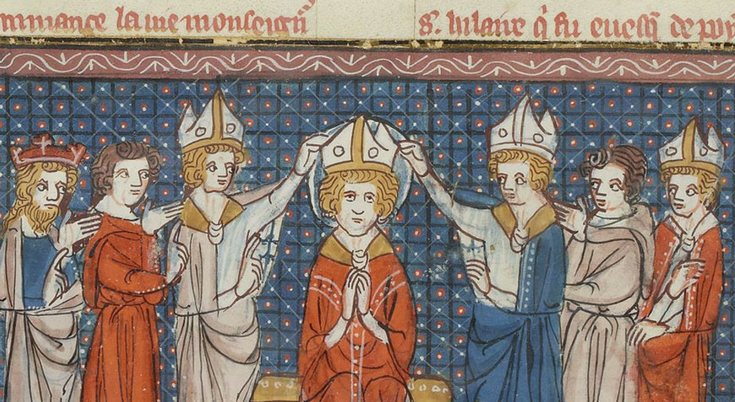St. Priscilla of Rome (1st c.) was a Christian noblewoman who served as a benefactor to the Christian community in Rome. She supported St. Peter the Apostle, the first Bishop of Rome, and her home near the underground catacombs served as the first pope's headquarters.
Priscilla was the wife of Manius Acilius Glabrio, a Roman politician, who was executed by the Roman Emperor Domitian for atheism, that is, his refusal to worship the Roman gods because he was Christian. St. Priscilla buried him on land they owned, in what was once a quarry, and donated the property to the Church so that others could also be laid to rest there. St. Priscilla was also martyred for her Christian faith and buried there.
Her catacombs, known since the earliest days of Christianity as the "Catacombs of Priscilla" are also referred to as the “Queen of the Catacombs” because such a large number of martyrs and popes were once buried there. They extend for eight miles under the city of Rome and contain a significant collection of early Christian iconography.
[[resurrection-icon-triptych, holy-family-cross-icon-6-x-6]]
EARLY CHRISTIAN ICONOGRAPHY
Below is a ceiling in one of the vaults of Priscilla's catacombs, containing and early depiction of Jesus as the Good Shepherd. This harmless imagery of a simple shepherd was a hidden message that concealed the Christian worship of Jesus from those ready to persecute the faith.
Surrounding Jesus is paradise imagery including Adam and Eve in the Garden of Eden, banquet trays of fruit, and the peacock which was an early Christian symbol of the resurrection of the body.

Jesus the Good Shepherd in the Garden of Paradise
Here is a description from the Vatican website:
"One of the images represented the most in the art of the catacombs is the Good Shepherd. While the model is taken from pagan culture, it immediately takes on a Christological significance inspired by the parable of the lost sheep. Christ is thus represented as a humble shepherd with a lamb on his shoulders as he watches over his little flock that is sometimes made up of only two sheep placed at his sides."
 Jesus the Good Shepherd
Jesus the Good Shepherd
Priscilla's catacombs also hold the earliest-known image of the Blessed Virgin Mary and the Child Jesus. Standing next to them is a prophet, presumably from the Old Testament, holding a scroll and pointing to the Bethlehem star which heralded the birth of the King of Kings.

More from the Vatican website:
"In the Roman catacombs the most ancient image is preserved of Our Lady who is depicted in a painting in the cemetery of Priscilla on the Via Salaria. The fresco, which can be dated back to the first half of the third century, depicts the Virgin with the Child on her knees in front of a prophet (perhaps Balaam or Isaiah) who is pointing to a star to refer to the messianic prediction. In the catacombs other episodes with Our Lady are also represented such as the Adoration of the Magi and scenes from the Christmas crib, but it is thought that prior to the Council of Ephesus, all these representations had a Christological and not a Mariological significance."
St. Priscilla's catacombs contain other biblical imagery, including the visit of the Three Wise Men to the Holy Family, the three children being thrown into the fiery furnace from the book of Daniel, and the raising of Lazarus from the dead.
 The Magi with the Madonna and Child
The Magi with the Madonna and Child
 Shadrach, Meshach, and Abednego thrown into the fiery furnace
Shadrach, Meshach, and Abednego thrown into the fiery furnace

The resurrection of Lazarus
TAKE A VIRTUAL TOUR
Learn more about the Catacombs of St. Priscilla in this detailed account from Catholic Pilgrims in Rome, and take your own virtual tour with the Google Maps View of St. Priscilla's Catacombs.
If you have been to Rome to visit St. Priscilla's catacombs, please share your story for our readers in the comments below.
Read next: Oldest Known Icons of Apostles Peter & Paul Discovered in Roman Catacombs
![]()




